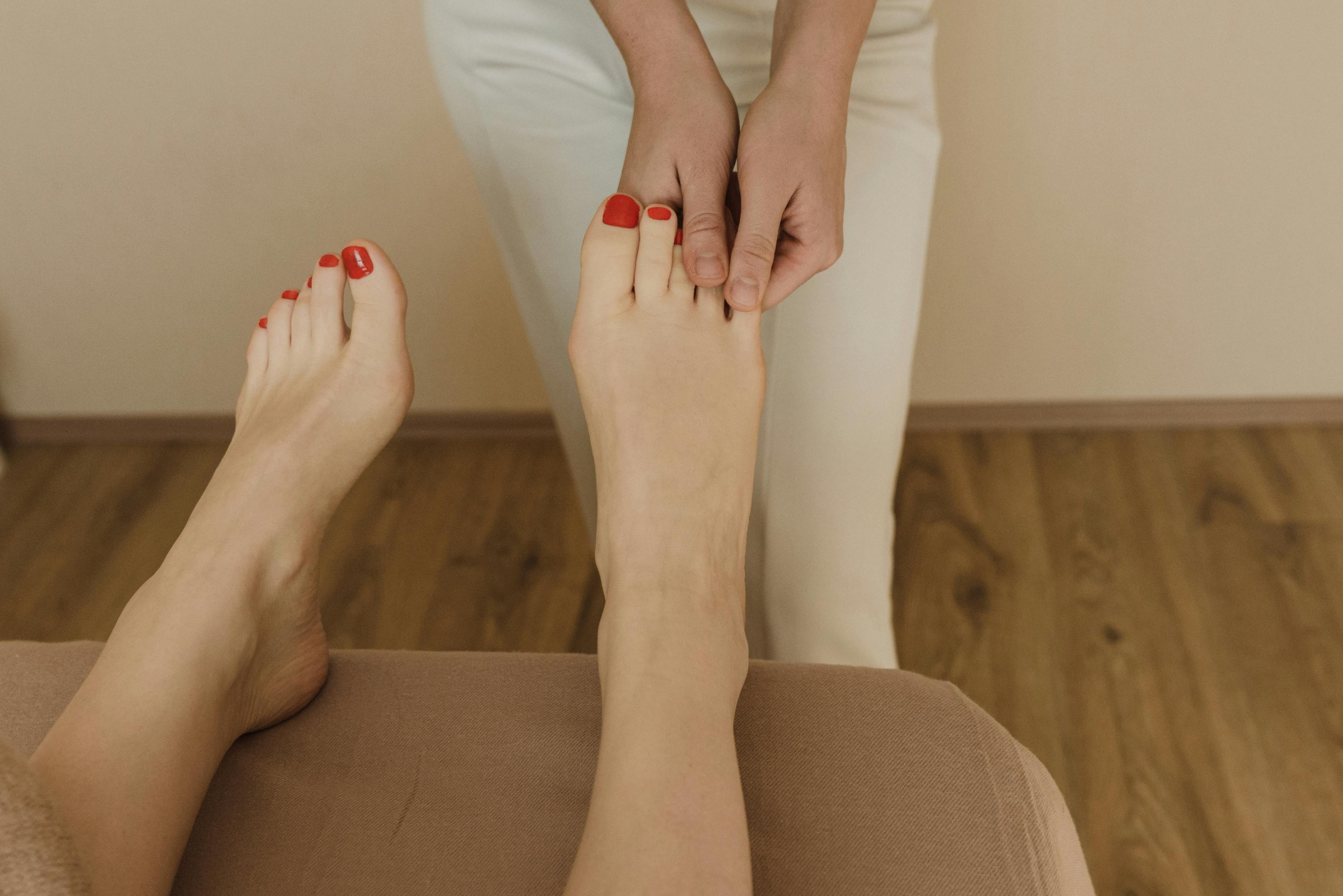
Have you recently experienced pain in your feet when trying to put on your shoes? You may have noticed that your toes are stuck in an unusual position, or you could have difficulty moving them. If that’s the case, then you might be experiencing a condition known as hammertoe.
What is Hammertoe?
Hammertoe is a condition that causes your toe, or several toes, to buckle and get stuck in one position. Usually, this condition will impact your middle toes. However, it can also impact any of the other toes on your feet. For instance, your toes can also curl up due to this condition. This usually impacts the smaller toes.
There are two types of hammertoes. The first is known as flexible hammertoes. In cases like this, you will still be able to move your toes at the point of the joint. This is good as it means that your issue is less severe. You can usually explore several treatment options for this type of condition.
Rigid hammertoes are a result of the tendons in your toe becoming too rigid. They push your toe out of alignment. During this stage, you will not be able to move your toe. You will need surgery to fix the issue that you are experiencing.
Causes
The main cause of hammertoe is wearing shoes that do not fit your feet correctly. This could include shoes that are too tight, too short or the wrong shape. Shoes like this will push your toes out of balance, causing issues with your tendons and ligaments. Pointy, high-heeled shoes can be particularly problematic for your balance. That’s why you should always make sure that your shoes fit correctly and comfortably. If you try to squeeze your feet into ill-fitting shoes, then it is likely that you will experience more pain and discomfort later on in life.
Other conditions that increase the likelihood of developing hammertoes include:
- Alcoholism
- Arthritis
- Polio
- Spinal cord tumors
You may also be more likely to experience issues with your toes due to the shape of your feet. For instance, people with high arches are more likely to experience issues. You could also find that you have problems with your toes because your feet tend to rotate inward while walking.
Other genetic factors include flat feet or any condition that makes your feet unstable. Your chance of developing this condition increases as you age, and you’re more likely to experience it as a female due to the shoe designs for women.
Hammertoes can also be quite serious for individuals with diabetes or any condition that causes poor levels of circulation. The reason for this is that these individuals are more likely to experience severe problems with infections and foot ulcers. If you do have a diagnosis for a condition like this, you should contact a medical professional as soon as you notice changes to your feet.
Symptoms
The main symptoms of hammertoe are one or multiple toes that are bent either upward in the middle or curled up. However, this can also cause various other symptoms. For instance, you might develop issues with blisters and calluses where the toes are rubbing against the top of your shoes while walking.
You could also develop issues with pain in your toe joint at the point where your toe meets the foot. Hammertoe can also cause significant levels of pain when walking and stiffness in the toes that becomes more severe over time.
Due to this, many people with this condition will seek out some form of relief.
Treatment
There are various treatment options available if you are experiencing issues with hammertoes. The right treatment option will depend on the severity of your condition as well as the cause of your condition.
Non-Surgical Treatment Options
If you don’t have severe issues with hammertoes and you can still move the affected toes, then non-surgical treatment will likely be the best option for you. This could be as simple as the right pair of shoes. For instance, a roomier pair of shoes will be more comfortable, particularly if they provide about half an inch of space for the toes. You can also get inserts or pads for your shoes. These are designed to reposition your feet and your toes to ensure that they have the space that they need.
In some cases, taping or splinting can be an effective treatment option. Do be aware that this will only be the case if you can still move your toes. If not, then you may need surgery.
Surgical Options For Hammertoes
Surgery options for hammertoes include:
Arthrodesis: The whole joint under the crooked toes is removed, and a wire is inserted to help the toes straighten out as they heal.
Arthroplasty: Half of the joint underneath the affected toe is removed so that the toe can lie flat without issues.
Basal phalangectomy: The base bone is removed from under the hammertoe.
Tendon transfer: Tendons under your toe are attached to the top to help straighten it.
Weil osteotomy: articular bones in your feet are shortened, and screws are inserted.
All of these surgical procedures are complicated and come with certain risks. As such, you should always carefully discuss the options with your medical professional before settling on the right choice for you.
Contact Eastern Idaho Foot Clinic
If you are experiencing issues with pain or discomfort due to hammertoes, you are not alone. This condition is more common than most people realize. There is also a wide range of associated conditions that make it far more likely that you will develop an issue like this with your toes.
The good news is that you don’t have to continue to live in discomfort. There are various treatment options available. Get in touch with a medical professional for advice on the best way to proceed. Alternatively, you can contact our team today directly to arrange an initial consultation and gain expert support.